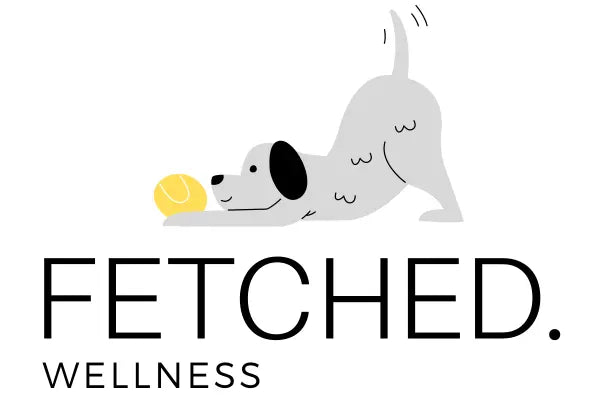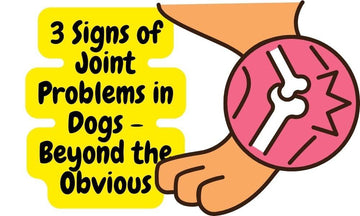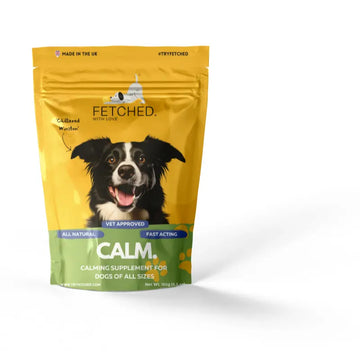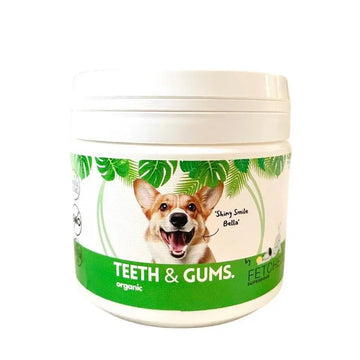Up to 1 in every 5 dogs in the U.K suffer from osteoarthritis. The incidence does of course vary depending on the dog breed and age. We know that certain breeds are more predisposed to developing osteoarthritis than others.
However, many dog owners I speak to are not sure what the signs are in a dog that is starting to develop this condition.
Table of Contents
As a dog behaviourist and having worked in veterinary practice before I believe understanding the diagnosis is critical. Knowing what osteoarthritis is and how to best manage it early on can make a world of difference in your dog's quality of life.
Why do dogs need healthy joints?
The anatomy of a joint consists of the two joint surfaces surrounded by a capsule, and synovial fluid encompassing the interior of this capsule. Coating the two ends of the joint surface is the cartillage.
Joints serve as the pivot points that facilitate movement. The cartilage acts as a soft cushion and the synovial fluid lubricates the joint helping it move without pain or rubbing.
In osteoarthritis of the joints, you get wear and tear of several of these joint structures. The most common cause for osteoarthritis is due to old age and wear and tear of the cartillage.
As the cartillage slowly gets thinner and thinner, there is less cushioning when the joint moves. This means closer rubbing of the hard ends of the joint, which can be painful due to the sensory receptors present.
With age, the synovial fluid can wear off as well, thus amplifying the loss of cartillage. The process is more complex at molecular level, but this is just an easy to understand overview of how it all works (source).
The common causes of joint problems
I would say that most joint problems can be traced to four main areas:
Genetics
Certain breeds like German Shepherds, Labradors, and Golden Retrievers are known to be predisposed to hip dysplasia and other degenerative joint conditions.
The reason for this can be traced to selective breeding. For example, these dogs have often been bred for their physical size and strength. In addition, their working role often involves intense physical activity such as herding or police work.
As the larger weight and more intense physical use can increase wear and tear, the genetic predisposition for joint problems is being passed on. I am not saying that every individual within these breeds will develop joint problems. However, if you own or are considering owning one of these breeds this is something you should be aware of.
You may also find that certain pet insurance company will price the policies differently based on genetic factors such as this.

Lifestyle
Both too much of too little exercise can contribute to joint issues. Obesity is also significant risk factor that puts additional pressure on joints, leading to faster degeneration of cartilage.
For this reason it's good practice to appropriately regulate your dog's food intake.
Overfeeding them or giving them the wrong kind of food can be more damaging to them in the longer term. The best diet for your dog is always a combination of foods we would eat as omnivores, specifically with a high protein percentage.
Medical Conditions
Pre-existing conditions such as Lyme Disease or other inflammatory joint problems can contribute to early development of arthritis or hip dysplasia.
For this reason it's good practice to take your dog regularly to vet checks. We know Lyme disease can be more prevalent in dogs than humans due to the higher likelihood of getting bitten by a tick.
If you live in an area with Lyme disease such as The New Forest, make sure you inspect your dog for ticks regularly. You can read more about what symptoms to look out for here.
Trauma or Accidents
An injured joint from trauma or accidents can make it more likely to have other health problems later in life. This general rule applies to both dogs and humans.
Trauma from accidents, ligament tears, or fractures can lead to immediate joint issues and may also contribute to chronic problems down the line if not properly managed.
If you notice your dog's gait is abnormal or begins walking with a limp, go see your vet for a quick check up.
The signs of joint problems in dogs
The obvious signs such as limping, stiffness, and difficulty in getting up are often late-stage symptoms. They tend to appear once the arthritis has significantly advanced.
But how can we spot the early signs? Here are three not so obvious signs to look out for:
Behavioural changes
Subtle signs such as hesitation before jumping or avoiding stairs can be harder to identify. Has your dog also changes their sitting or standing posture from what they are used to?
Maybe they are being less interactive with toys or family members and less willing to play fetch?
For example, one day I noticed that my Labrador, Charlie, kept changing positions when sitting. He never used to do this before. It was almost as if he couldn't find a comfortable position to sit in.
Does your dog no longer come out of the house to greet other family members? Or perhaps they spend more time lying down in their bed?
There may only be subtle signs but if in doubt you should book an appointment with your vet. They are more experienced at detecting even early signs of osteoarthritis in dogs.
Psychological signs
Changes in mood, increased irritability, or signs of lethargy and tiredness can also be due to joint pain and chronic discomfort. These could either be due to direct joint pain affecting their mood, or due to changes in their sleeping pattern.
Take for example if it takes your dog longer to get comfortable; that means he or she won't get enough sleep during the night time. This can make them more irritable or less willing to exercise or play with your the following day.
Part of the psyhological changes might be an increase in vocalization. Increased whining, groaning, or other sounds when moving can also be subtle signs.
Differences in Play and Interaction
This one goes beyond a decrease in their willingness to play or interaction with others.
In some cases, your dog may still want to play, but they will get slower or avoid certain movements.
This is especially noticeable if they avoid activities that involve jumping or quick turns.
Dogs with joint problems may also become less tolerant of other pets, especially if they are younger or more energetic. They may also withdraw from family activities. Does your dog spend more time in their bed when in the past he or she would sit around the dining table?
Taking a Holistic Approach
Say you're concerned about your dog's joints and you've already visited a vet. They've unfortunately confirmed your worries. What's next?
What are some of the treatment options and what can we do to help your canine friend?
Well, here are two completely natural ways you can approach this:
Alternative therapies
Methods like acupuncture have been shown to release endorphins, which can significantly reduce pain. If you do intend to try this, make sure you go for a reputable veterinary acupuncturist.
Acupuncture in dogs is safe as long as it's performed appropriately.
Canine massage is another brilliant alternative therapy. The science behind this is that it improves the blood flow to the joints. This in turn can aid in healing the joints, reducing stiffness and also improving the muscle function.
Natural Supplements
Natural supplements for dogs, such as those containing collagen, glucosamine and hyaluronic acid can really help.
Several studies have shown that collagen, glucosamine and hyaluronic acid work together to relieve joint pain in dogs with established and early arthritis.
I hope this article has helped improve your knowledge on the most subtle signs of joint problems in dogs. Remember that your vet is your best friend in both preventing and treating conditions to ensure your dog has a high quality of life. Get in touch with them if any concerns.









